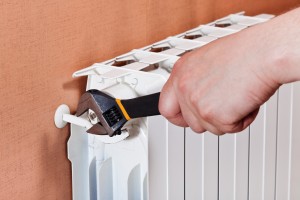
One way to determine the efficiency of your heating system is through a measurement called annual fuel utilization efficiency, or AFUE. Whether you are in the market for a new heating system, or just want to learn more about the one you already use, understanding AFUE is helpful.
What is AFUE?
Annual fuel utilization efficiency, or AFUE, measures the thermal efficiency of heaters and other combustion equipment like water heaters and boilers. What AFUE attempts to represents is an average of how efficient a piece of equipment is long-term. This number is always expressed as a percentage and is determined by the energy output based on the energy input. A simplified example is a gas furnace that has an output of 90 BTUs for every 100 BTUS of gas input. The AFUE of this furnace would be 90 percent. The closer to 100 percent an AFUE measurement, the more efficient the heater.
It is important to note that even if your heater has an AFUE rating of close to 100 percent, this does not account for any lost energy in ducts or piping. The U.S. Department of Energy reports that energy lost as heat travels through infrastructures can be as high as 35 percent. Still, finding a heater with a high AFUE rating means that more of the energy used will actually make it to the rooms of your home, no matter what duct or piping systems are in place.
What is a Good Heater Efficiency?
Good heater efficiency varies based on the type of heater you own or plan to install. Here are a few suggestions on what AFUE rating to seek out when you are shopping for a new heating system:
Furnaces
Always look for a minimum AFUE rating of 78 percent. If you want an even higher AFUE rating, you can certainly find it. Some of the most energy-efficient furnaces available today come with a rating close to or at 100 percent. In homes with older heating systems, it is not uncommon for AFUE ratings to be between 50 and 70 percent.
How Can You Evaluate Your Own Heater’s Efficiency?
You can find the AFUE efficiency rating of your heater in a few ways. First, check the furnace faceplate. It should have the AFUE rating listed. If you cannot find this information, find the model or serial number of the furnace. Head to the manufacturer’s website and look there for the efficiency ratings based on what you find. If you are purchasing a new heater, the AFUE rating should be clearly labeled on the box.
For a furnace to be officially considered “high efficiency” by the Federal Trade Commission, it must have an AFUE rating of 90 percent of higher. This will usually by noted with a yellow Energy Guide sticker that is now mandated by the FTC. The upfront price for a furnace goes up as the AFUE efficiency rises, but that money is made back over time. As energy costs rise, the efficiency of your heater will remain steady and save you money.
Understanding AFUE ratings will help make the comfortable San Diego heating of your home possible. No matter what your current furnace’s efficiency, look for ways to conserve energy and ultimately save yourself money.

 FREE Live Music and Family Fun at Allied Gardens First Fridays The next Allied Gardens First Fridays Summer Concert in the Park is just around the corner. Grab your lawn chairs, bring a picnic, and get ready to meet your
FREE Live Music and Family Fun at Allied Gardens First Fridays The next Allied Gardens First Fridays Summer Concert in the Park is just around the corner. Grab your lawn chairs, bring a picnic, and get ready to meet your  Ideal Plumbing Heating Air Electrical Named Winner of 2023 Better Business Bureau Torch Awards for Ethics in San Diego (San Diego, CA – September 15, 2023) Better Business Bureau Serving the Pacific Southwest (BBB) has named Ideal Plumbing Heating
Ideal Plumbing Heating Air Electrical Named Winner of 2023 Better Business Bureau Torch Awards for Ethics in San Diego (San Diego, CA – September 15, 2023) Better Business Bureau Serving the Pacific Southwest (BBB) has named Ideal Plumbing Heating